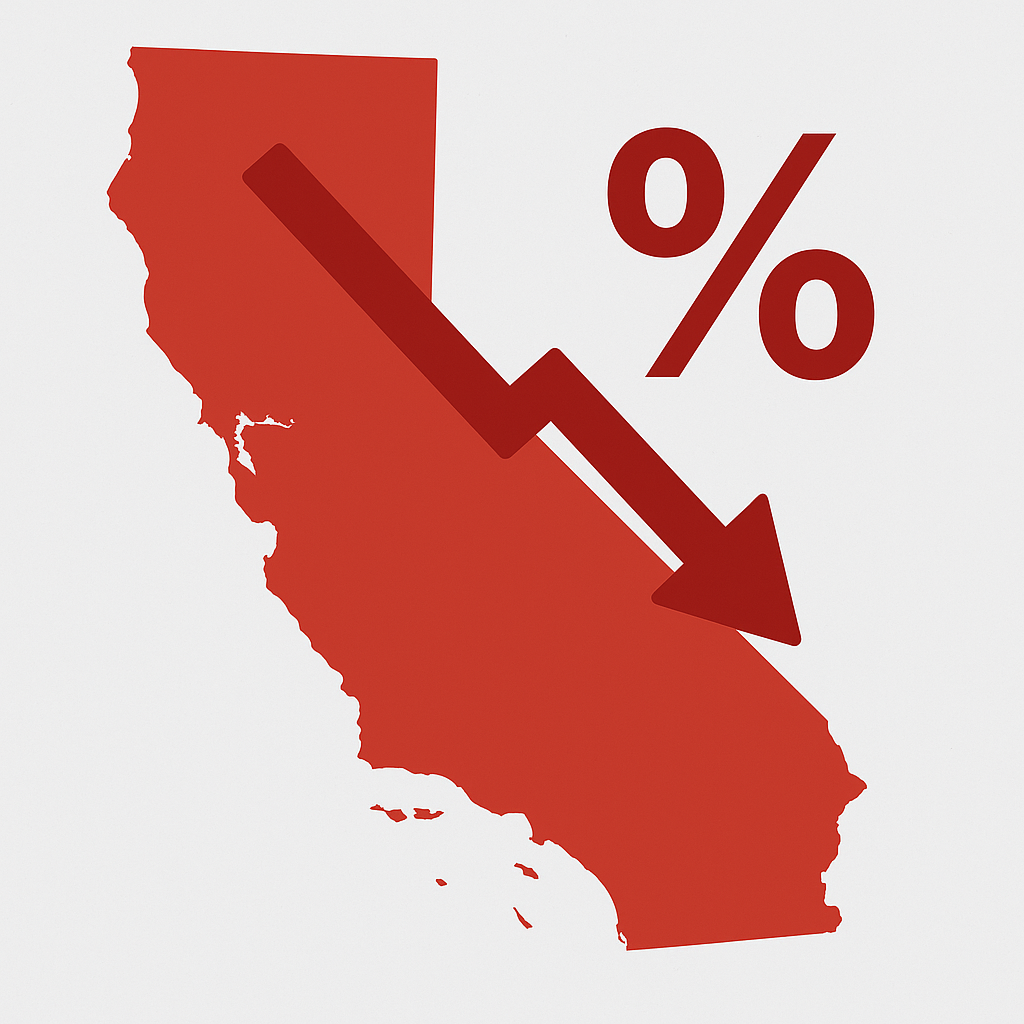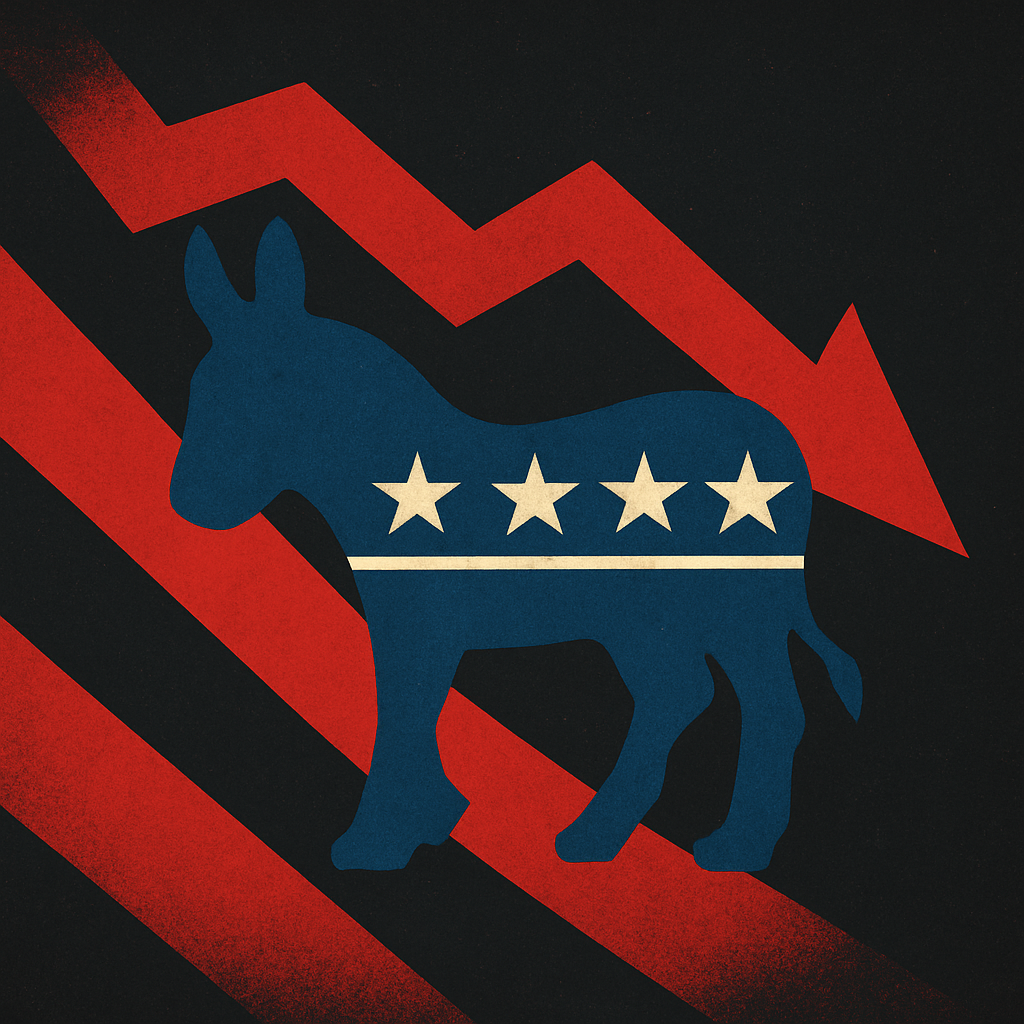California’s 2024 voter turnout mirrored a national trend of disengagement, particularly among key Democratic groups.
What to Know:
- Voter turnout in California dropped by 4.8 percentage points in 2024, with over 1 million fewer ballots cast compared to 2020.
- The steepest declines came from Democratic-leaning groups, including Latino voters, Black voters, Asian Americans, and voters aged 18 to 24.
- Latino turnout fell from 54 percent to 46 percent, despite Latinos comprising roughly one-third of the state’s electorate.
- Young voter turnout declined to 42.5 percent, and Black voter participation fell by nearly 20 percent.
- Asian American turnout dropped by nearly 5 points, with limited outreach and language accessibility cited as contributing factors.
California is often treated as a political monolith, a safely blue state immune to voter disengagement. But the 2024 general election blew that myth apart. According to new data from USC’s Center for Inclusive Democracy, more than 1 million fewer Californians voted in 2024 than in 2020, resulting in a staggering 4.8 percentage point drop in turnout.
The steepest declines in voter turnout were concentrated within the Democratic base.
The Voters Who Stayed Home
A recent report from USC's Center for Inclusive Democracy paints a concerning picture of voter disengagement in California's 2024 election, extending beyond just the headline figures. The turnout collapse wasn’t random; it was deeply concentrated among key Democratic-leaning constituencies who have historically swung elections in both state and national races.
According to Campaigns & Elections, one of the key findings is that voters of color and younger voters were less likely to receive direct contact from campaigns and more likely to say they didn’t feel motivated by the choices presented.
Let’s break it down:
- Latino voter turnout in California plummeted from 54% in 2020 to 46% in 2024. This demographic accounts for approximately one-third of the state's electorate. That’s a collapse among a community that delivered crucial margins in both the Obama and Biden coalitions. In raw numbers, that translates to hundreds of thousands of missing votes from a base Democrats can’t afford to lose.
- Young voters aged 18 to 24, another cornerstone of the progressive coalition, saw turnout fall from over 50% in 2020 to just 42.5% in 2024. Even with significant youth-led efforts focused on climate, housing, and student debt, these voters seemingly felt detached from the political process or doubtful that their participation would make a difference.
- Turnout among Asian American voters in California, often considered a swing group, saw a nearly 5 percentage point decline. This community, which has been politically activated in recent cycles, showed signs of retreat. The report flags a lack of sustained outreach and underinvestment in multilingual messaging as likely culprits.
- Black voter participation, historically high in 2020 amid the racial justice uprisings, declined by nearly 20%. This is perhaps the most jarring number of all. For a party that claims to be rooted in civil rights and racial equity, failing to re-energize Black voters suggests a serious breach in political trust and organizing discipline.
These trends are not exclusive to California; they reflect broader patterns observed in strongholds nationwide. Oregon, Washington, and Hawaii also saw turnout slides in 2024, suggesting that the national Democratic coalition is hollowing out from the inside, even in states where they win comfortably.
Why It Happened:
The decline in voter turnout in California during the 2024 election can be traced to a complex set of factors that reflect deeper structural issues rather than simple voter apathy. While the numbers show a clear drop in participation, especially among young voters and communities of color, the underlying causes point to a broader disconnection between political institutions and the people they are meant to serve.
Many voters who chose not to participate were not disengaged from civic life in general but rather felt that the political process lacked relevance to their immediate needs and concerns. Without highly visible or competitive races on the ballot, and in the absence of compelling statewide propositions, voters had fewer reasons to feel personally invested in the outcome. This was particularly true for individuals who are often underrepresented in the political system, including first-time voters, low-income residents, and non-native English speakers.
In previous cycles, particularly in 2020 and 2022, heightened turnout was driven in part by a sense of urgency surrounding national issues such as public health, civil rights, and reproductive freedom. By 2024, many of those issues had either faded from the forefront of campaign messaging or were not effectively communicated in a way that motivated turnout.
Campaigns operating in California, a state typically considered safely Democratic, did not deploy the same level of outreach and organizing resources as those seen in swing states. This strategic decision may have contributed to a perception that participation was less necessary or impactful.
A Warning From California, Not a Fluke
California’s sharp decline in voter turnout should not be treated as an isolated incident or dismissed because the state remains safely Democratic. In fact, it offers a valuable case study in what happens when campaigns rely too heavily on demographic assumptions and fail to invest in sustained voter engagement.
In competitive states, campaigns were more aggressive with field operations, direct outreach, and focused messaging on issues that resonated with voters’ everyday economic concerns. The lesson is clear: turnout does not take care of itself, even in states with strong partisan leanings. When voters are not mobilized with purpose and relevance, they are less likely to show up, regardless of past voting behavior.
Wrap Up
California’s turnout collapse should serve as a wake-up call for Democrats heading into 2026 and 2028. It demonstrates that even deep-blue states are vulnerable when campaigns neglect core constituencies and rely on demographic trends instead of active engagement. The drop in participation exposed a failure to connect on economic issues and highlighted the risks of symbolic alliances that do little to motivate the base. When voters feel overlooked or uninspired, they opt out, and the consequences ripple far beyond one state.
For Republicans, the implications are just as significant. Low Democratic turnout can be as advantageous as strong Republican mobilization, especially in areas where the GOP lacks a ground game. California was not an anomaly; rather, it served as an early indicator of a broader national enthusiasm issue. If Democrats do not reinvest in long-term organizing, particularly among young voters and communities of color, they risk ceding ground not just in swing states but across the entire electoral map.




.png)
